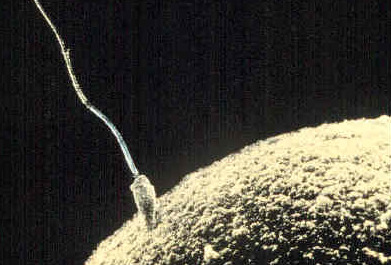By Publius
Here are seven 2014 findings on how the cannabinoid system (CS) modulates homeostasis and other systems in our bodies: the roundup links to recent PubMed articles on the physiology, digestive, hypothalamic neurohypophyseal, vanilloid, dopamine, reproductive, and nervous systems.
I. Physiology System (Aging) and the CS
“2-arachidonoylglycerol (2-AG) is one of the principal endocannabinoids involved in the protection against neurodegenerative processes. … Taken together, the results of the present study show that CB1 and/or CB2 receptor antagonists trigger a significant modulation of 2-AG metabolism, underlining their relevance as therapeutic strategy for controling endocannabinoid levels in physiological aging.”
Cannabinoid receptor-dependent metabolism of 2-arachidonoylglycerol during aging.
Pascual AC, Gaveglio VL, Giusto NM, Pasquaré SJ.
Exp Gerontol. 2014 Apr 24. pii: S0531-5565(14)00129-6. doi: 10.1016/j.exger.2014.04.008. [Epub ahead of print]
PMID: 24768821 [PubMed - as supplied by publisher]
Related citations
II. Digestive System (Arachidonic Acid) and the CS
“The endogenous ligands of type-1 and type-2 cannabinoid receptors, N-arachidonoyl-ethanolamine and 2-arachidonoylglycerol, are arachidonic acid (AA) derivatives whose levels are regulated by the activity of metabolic enzymes, as well as by AA availability. Since the only sources of AA in mammals are diet and the enzymatic production in the liver from shorter-chain essential fatty acids like linoleic acid, it is realistic to hypothesize that endocannabinoid levels might be modulated by fatty acid composition of food.”
Endocannabinoid signaling and its regulation by nutrients.
Bisogno T, Maccarrone M.
Biofactors. 2014 Apr 21. doi: 10.1002/biof.1167. [Epub ahead of print]
PMID: 24753395 [PubMed - as supplied by publisher]
Related citations
III. Hypothalamic Neurohypophyseal System (Pituitary Stalk) and the CS
“Endocannabinoids (ECBs) are considered ubiquitous lipophilic agents, and this is a characteristic that is consistent with the wide range of homeostatic functions attributed to the ECB system. There is an increasing number of reports showing that the ECB system affects neurotransmission within the hypothalamic neurohypophyseal system.”
The endocannabinoid system and the neuroendocrine control of hydromineral balance.
Ruginsk SG, Vechiato FM, Elias LL, Antunes-Rodrigues J.
J Neuroendocrinol. 2014 Apr 17. doi: 10.1111/jne.12158. [Epub ahead of print]
PMID: 24750469 [PubMed - as supplied by publisher]
Related citations
IV. Vanilloid System (Retrograde Signaling) and the CS
“One of the two major endocannabinoids, 2-arachidonoylglycerol (2-AG), serves as a retrograde messenger at various types of synapses throughout the brain. … Whereas 2-AG primarily transmits a rapid, transient, point-to-point retrograde signal, the other major endocannabinoid, anandamide, may function as a relatively slow retrograde or non-retrograde signal or as an agonist of the vanilloid receptor.”
Endocannabinoid-mediated retrograde modulation of synaptic transmission.
Ohno-Shosaku T, Kano M.
Curr Opin Neurobiol. 2014 Apr 16;29C:1-8. doi: 10.1016/j.conb.2014.03.017. [Epub ahead of print] Review.
PMID: 24747340 [PubMed - as supplied by publisher]
Related citations
V. Dopamine System (Hedonistic Aspects) and the CS
“The endocannabinoid (ECB) system has emerged recently as a key mediator for reward processing. … Our data further indicate that the ECB system, and in particular CB1 receptor signaling, appear to be highly important for the mediation of hedonic aspects of reward processing.”
The CB1 Receptor as an Important Mediator of Hedonic Reward Processing.
Friemel CM, Zimmer A, Schneider M.
Neuropsychopharmacology. 2014 Apr 10. doi: 10.1038/npp.2014.86. [Epub ahead of print]
PMID: 24718372 [PubMed - as supplied by publisher]
Related citations
VI. Reproductive System (Sperm) and the CS
“In human spermatozoa, which exhibit a completely functional endocannabinoid system, the activation of cannabinoid receptor-1 (CB1) inhibited sperm mitochondrial membrane potential (ΔΨm). … In conclusion, E. coli LPS inhibited sperm ΔΨm through the activation of CB1, but this effect was not accompanied to the activation of mitochondrial dysfunction-related apoptotic/oxidative mechanisms, which could affect sperm motility and genomic integrity.”
Involvement of cannabinoid receptor-1 activation in mitochondrial depolarizing effect of lipopolysaccharide in human spermatozoa.
Barbonetti A, Vassallo MR, Costanzo M, Battista N, Maccarrone M, Francavilla S, Francavilla F.
Andrology. 2014 Apr 1. doi: 10.1111/j.2047-2927.2014.00210.x. [Epub ahead of print]
PMID: 24692267 [PubMed - as supplied by publisher]
Related citations
VII. Nervous System (Pain) and the CS
“We investigated the effects of anandamide on 4 neuronal sodium channel α subunits, Nav1.2, Nav1.6, Nav1.7, and Nav1.8, to explore the mechanisms underlying the antinociceptive effects of anandamide. … Anandamide inhibited the function of α subunits in neuronal sodium channels Nav1.2, Nav1.6, Nav1.7, and Nav1.8. These results help clarify the mechanisms of the analgesic effects of anandamide.”
The endocannabinoid anandamide inhibits voltage-gated sodium channels Nav1.2, Nav1.6, Nav1.7, and Nav1.8 in Xenopus oocytes.
Okura D, Horishita T, Ueno S, Yanagihara N, Sudo Y, Uezono Y, Sata T.
Anesth Analg. 2014 Mar;118(3):554-62. doi: 10.1213/ANE.0000000000000070.
PMID: 24557103 [PubMed - indexed for MEDLINE]
Related citations
~'~
Posted by Bryan W. Brickner









 RSS Feed
RSS Feed
